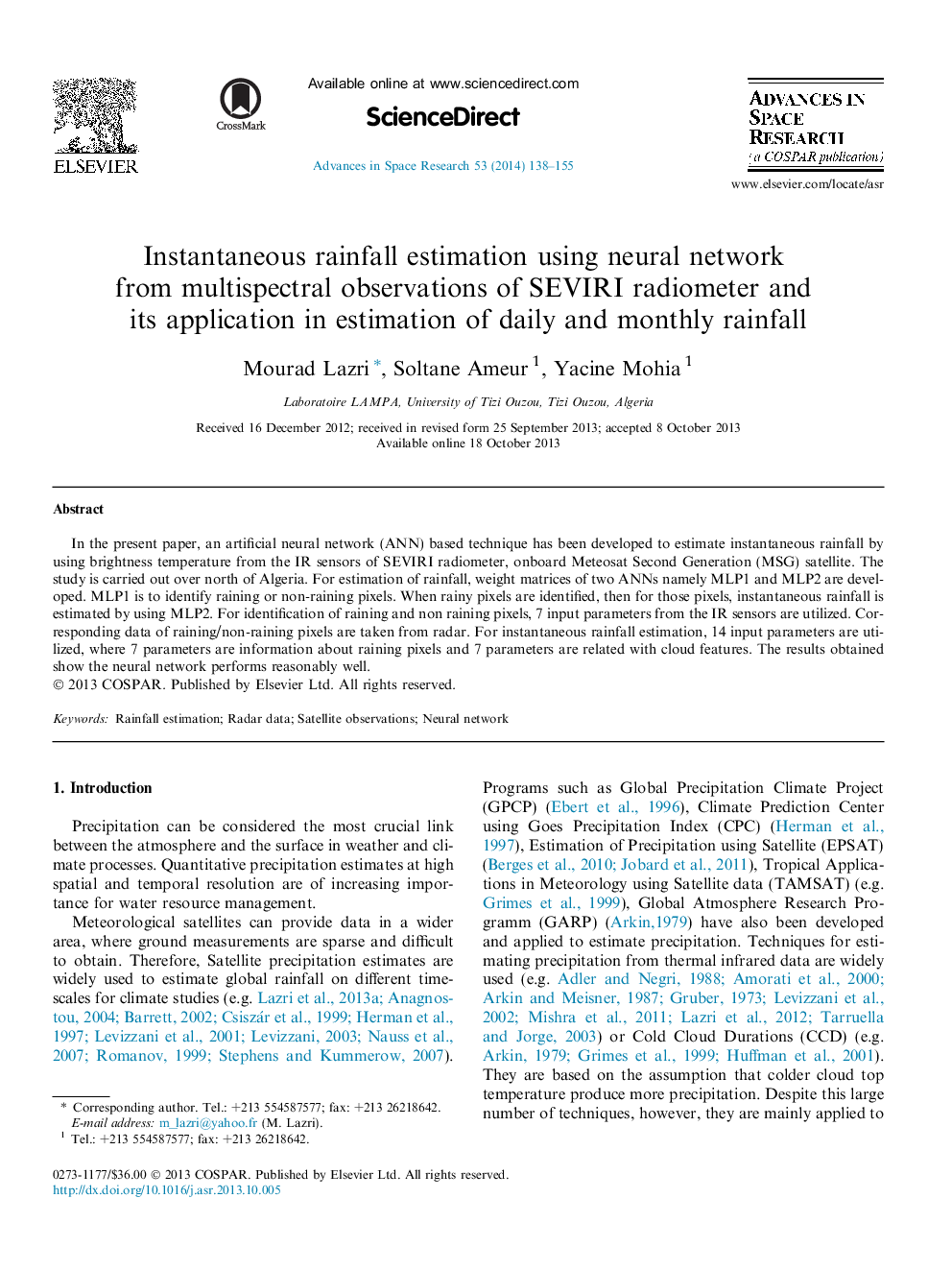| Article ID | Journal | Published Year | Pages | File Type |
|---|---|---|---|---|
| 1763993 | Advances in Space Research | 2014 | 18 Pages |
Abstract
In the present paper, an artificial neural network (ANN) based technique has been developed to estimate instantaneous rainfall by using brightness temperature from the IR sensors of SEVIRI radiometer, onboard Meteosat Second Generation (MSG) satellite. The study is carried out over north of Algeria. For estimation of rainfall, weight matrices of two ANNs namely MLP1 and MLP2 are developed. MLP1 is to identify raining or non-raining pixels. When rainy pixels are identified, then for those pixels, instantaneous rainfall is estimated by using MLP2. For identification of raining and non raining pixels, 7 input parameters from the IR sensors are utilized. Corresponding data of raining/non-raining pixels are taken from radar. For instantaneous rainfall estimation, 14 input parameters are utilized, where 7 parameters are information about raining pixels and 7 parameters are related with cloud features. The results obtained show the neural network performs reasonably well.
Related Topics
Physical Sciences and Engineering
Earth and Planetary Sciences
Space and Planetary Science
Authors
Mourad Lazri, Soltane Ameur, Yacine Mohia,
